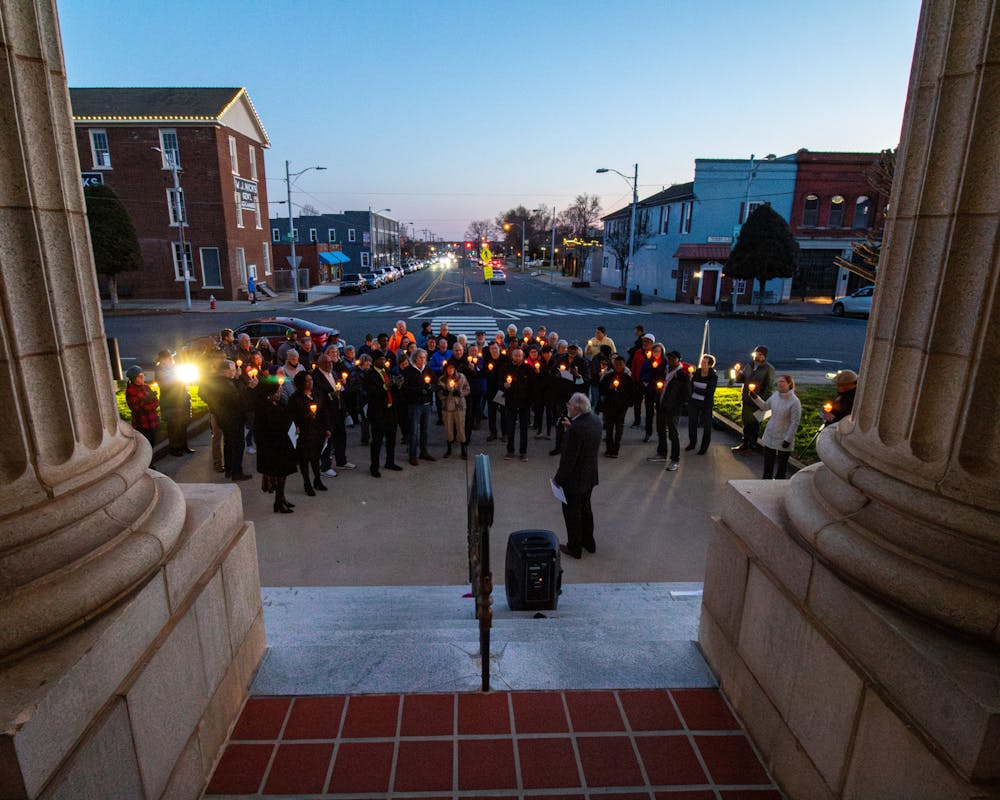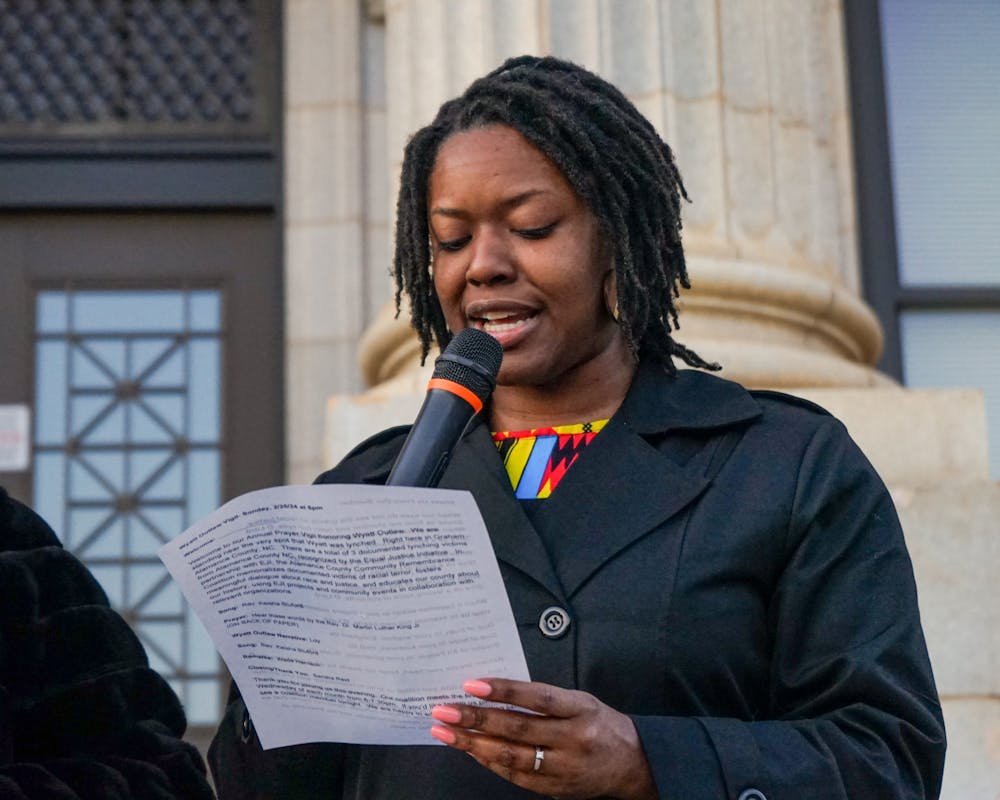Updated as of 11:36 p.m. on March 5 to include video from the vigil.
Wade Harrison, member of the Alamance County Community Remembrance Coalition, said the lessons of Wyatt Outlaw are as relevant today as they were 154 years ago when he was lynched on Feb. 26, 1870 in Graham.
Close to 70 people gathered at sunset on Feb. 25 on the eve of the anniversary of his murder. In 1869, the White Brotherhood, the white supremacist group that lynched Outlaw, made a show of force in Graham which demonstrated their power and disdain for law enforcement. Outlaw interfered with the event by firing shots into the air. One year later, he was lynched by the same group.

Around 70 members of the Alamance county community gather on the south side of the Alamance County Courthouse in Graham on Feb. 25 to remember Wyatt Outlaw on the eve of the 154th anniversary of his lynching.
Campbell said at the event that when Outlaw was lynched, a sign hung around his neck that said, “beware ye traitors both Black and white.” This is the fifth consecutive year the coalition has hosted a vigil for Outlaw.
Outlaw was the first Black member of the Graham Town Council, as well as a successful entrepreneur and well-respected member of the community — according to Loy Campbell, member of the coalition and speaker at the event.
Outlaw’s great-great-grandson Samuel Merritt also participated in the vigil and thanked the community for remembering Outlaw’s life.
“I'm so elated that the community has this energy involved to remember my ancestor like this, the things that he stood for and the ultimate sacrifice that he made,” Merritt said.
Wyatt Outlaw was lynched on the site of what is now Sesquicentennial Park, across the street from where a Confederate statue has stood since 1914.
One of the men who participated in the lynching was Jacob A. Long — brother of William S. Long, who was Elon University’s first president. Elon’s Long building, located just south of the Alamance Building, is named after William.
The murder of Outlaw was part of a wave of racial violence in Alamance and Caswell Counties in 1870 that led then Gov. William Woods Holden to declare martial law to control the violence in both counties.
In response to the murders of both Outlaw and State Sen. John W. Stephens in Caswell County – Holden directed a pro-union militia leader, Col. George W. Kirk, to break up Klan activity. As a result Kirk was arrested, and Holden was impeached and removed from office. This later became known as the Kirk-Holden War.
Merritt said he believes that the City of Graham and Alamance County should add something to commemorate Outlaw’s life and sacrifice.
“Because of his place in history, … some type of commemorative thing — I'm not sure if that's a sign or statue,” Merritt said. “Something that would commemorate his life and the sacrifice that he made on behalf of the community so to speak.”
Mother and daughter Keisha and Erica Bluford, who are practicing lawyers in Graham, offered a prayer and led the vigil in a song. Erica said while it can be difficult to work in a place like Graham, across from a Confederate statue, commemorating people like Outlaw helps to heal the Graham community.

Erica Bluford leads a group of roughly 70 people in prayer during a ceremony honoring Wyatt Outlaw held at the Alamance County Courthouse on Feb. 25 in Graham. Outlaw was lynched by members of the White Brotherhood on Feb. 26, 1870.
Keisha said as a Black lawyer in Graham, the story of Outlaw hits close to home, as he was killed as a warning to other Black and white outspoken individuals.
“It felt like we could have been a target then,” Keisha said.
Keisha also said the Confederate monument in front of the courthouse is disheartening to see. Erica said while it is a constant, negative reminder of Graham’s history, it is also a reason to be even more present in the community.
“We don't like it, but I do think it's important to have events like this. A monument is a very loud display of what it’s supporting, so we should have more events like this to show that we are also here,” Erica said.


